The best logistics strategy results in effective freight & warehouse management, inventory control, order processing, fleet management, demand forecasting, and customer service. Seemingly, creating a plan that guarantees it yields estimated outcomes within all the logistics touchpoints is humanly impossible. That’s why logistics businesses need an app, a software solution to streamline the logistics app development process.
Besides, logistics companies play a vital role in the global supply chain, which is rapidly transforming, leaning on emerging technologies. This digital transformation in logistics is crucial as it enables companies to adapt to new challenges and remain competitive. However, introducing the latest technologies in the logistics processes streamlines operations and reduces expenses in several areas.
Developing a mobile app for logistics businesses, for example, comes in handy in many ways. Market figures must be examined due to logistics applications’ global usage and rising acceptance rates to understand this quickly developing sector.
Logistics Mobile App Development: Market Stats
In 2022, the valuation of the global logistics development market was $10,1 billion. From 2023 to 2028, the market is anticipated to grow at a CAGR of 8.31%.
According to Statista, the logistics market in the Asia-Pacific region is the largest in the world with a size of approximately $3.9 trillion U.S. dollars. The rapid expansion of e-commerce in the Asia-Pacific region is driving the market’s expansion.
With a market share of 40% in 2022, the transport management system (TMS) segment is the dominant user of logistics management software.
With a 25% market share, the manufacturing industry is the leading user of logistics management software. The retail industry comes in second with a 20% market share. With a 15% market share, the e-commerce industry is also a significant user of logistics management software.
As we keep an eye on the booming growth of logistics mobile apps, it’s high time we delve into the different reasons that have fueled their remarkable rise and success .
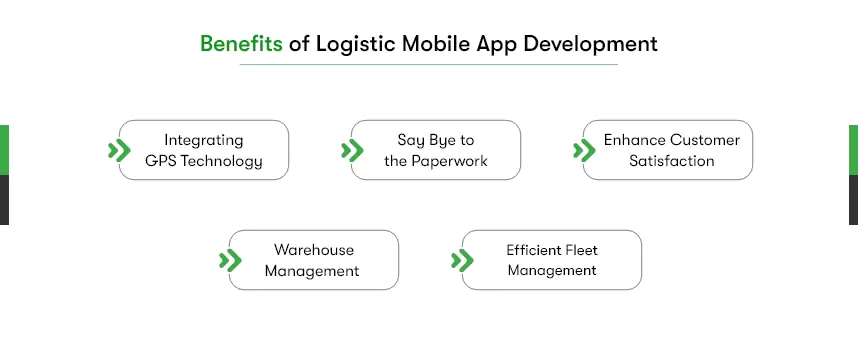
Logistics mobile app development benefits:
- Integrating GPS technology in the app, you can make transportation services more transparent for customers as well as owners. Not only in crisis but logistics mobile app development is also a savior for the transportation industry in all seasons.
- Say bye to the paperwork as logistics mobile apps provide real-time access to a company’s database across the enterprise departments.
- Enhance customer satisfaction, reducing delivery time and costs by scheduling shipments, predicting fuel expenses, and reducing empty miles.
- Warehouse management becomes easier with built-in data and barcode scanning app features that boost stock storage and freight dispatch.
- Efficient Fleet management is another advantage of logistics applications. You can record vehicle and driver details, track procurement costs, fuel transactions, route optimization, and overall fleet performance through reports and charts.
Now we know why logistics businesses need a mobile app. But what about the app needs? Whether it’s business or business application development, there will always be basic steps you need to take to achieve the desired outcome.
Here we dig into what logistics app development fundamental steps are that every logistics company should consider. Partnering with a reputable logistics software development company can ensure these steps are executed efficiently. So, let’s get started!
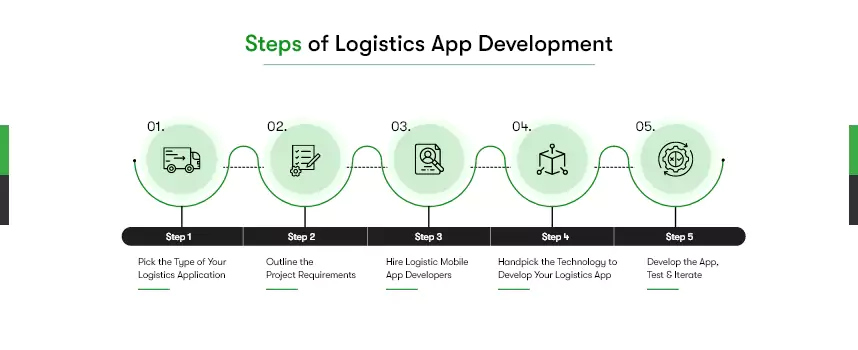
How to Create a Logistic App?
As an on-demand logistics app development company, we often see clients confused about where to start their app development process. Confusion is apparent when you are new to something. It’s only researching and consulting with the right app development team that can help you create a solution for your business needs.
In other words, you must be aware of the development process of your logistics app. Because then only you can make better decisions on your own. So, here are the steps to creating a logistics mobile app for your business:
Step 1: Pick the type of your logistics application
The first thing you want to do is identify what type of logistics app suits your enterprise as per your business model. Since logistics companies tend to have various departments, app types vary by purpose, required functionalities, and end-users. Check out the different types of apps considered in the digital logistics market.
- Fleet management app: Such an app is valuable if your priority is to record information regarding your vehicles, as these apps allow you to organize, manage, and coordinate with the vehicle through a central information system.
Its major features include;
- Real-time inspections submissions
- Issues reports
- Barcode scanning for automating data updates
- In-app gallery with photos, docs, etc.
- GPS for vehicle tracking
- Submission of Work Orders
- logistics app: As the name suggests, on-demand logistics apps help companies offer their vehicles to customers as required. Customers book the delivery service, track their orders, and pay for everything through the app.
Its major features include;
- Delivery services list to book
- Customer profile
- Shipment tracking
- In-app communication
- Online payment options
- Warehouse management app: Such apps optimize your warehouse operations digitally and accelerate delivery with utmost efficiency via storing goods information in an accessible manner.
Its major features include;
- Barcode scanner
- Integration with other resource management systems like ERP
- inventory management
- Order fulfillment
- Transportation management
Step 2: Outline the project requirements
Once you realize what type of logistics app your business needs, it’s time to prepare a project requirement document. A PRD is a comprehensive statement consisting of the actions, processes, and project conditions. For example, milestones to achieve with timeline, criteria to validate project deliverable quality, etc. By the way, the practice also helps in project management.
However, you will need experts in your team to carry out this step as it includes,
- Brainstorm over problems and desire solutions
- Prioritize and rank high-value ideas
- Collect feedback from stakeholders or end-users
- Create context diagrams or wireframes to describe the system functions
- Create prototypes to test and validate requirements with the project progress.
Step 3: Hire logistic mobile app developers
You partner with vendors and drivers to carry out your business processes and serve customers better. Likewise, to carry out the logistics app development process, you need seasoned developers and designers.
When you have an in-house development team, you can augment the team by hiring remote app developers. On the other hand, when you don’t have a team, you outsource the project from anywhere in the world. Because building an app development team from scratch for a single project can suck up your whole budget.
There are mobile app development companies providing custom logistics app solutions. So, your job is to search for a reliable software company with an innovative development team. Clutch and Good Firms are among the famous sites where entrepreneurs find the right technology partner.
Step 4: Handpick the technology to develop your logistics app
Technology selection has to align with the project requirements. You create an app for desktop, mobile, and operating systems, all directly influencing the technology requirements. Besides, there are two ways you can choose from for your logistics app development, i.e., Native app development & Cross-platform app development.
To clarify, the core difference between both approaches is that with Native, you are required to create apps separately for each operating system (Android, iOS, Windows). In contrast, you can write code once and reuse it to develop an app for every platform you want to launch it on.
As for the Native approach, you use specific technologies, for instance, Java for Android and Swift for iOS. In cross-platform, however, SDKs like Flutter provide you with everything you need to create a reusable codebase. The cross-platform approach is highly recommended for startups as it saves time and cost.
Apart from the app development approach, you are also required to check in on current technology trends in the industry.
- Internet of Things
- Artificial Intelligence
- Warehouse automation/Robotics
- eCommerce & Last-Mile Delivery
- Blockchain
- Big Data & Data Analytics
- Cloud Computing.
Step 5: Develop the app, test & iterate
Last but of course not least, when your application is ready to kick off, your quality analyst needs to kick in. Your logistics application has to be easy-to-use, high-performing, and bug-free. Furthermore, you might need to test your app multiple times and iterate the process until everything is as it is supposed to be.
Nonetheless, you can release your app and keep acting upon the user feedback. Because there always be some improvement areas that are recognized after deployment by users more often than not.
Alternatively, you can also choose the MVP approach to validate your project requirements are aligned with your app objectives. This way, you can polish your final app version down the line.

Emerging Technologies for your Custom Logistics Mobile App Development
IoT Applications
The IoT, or Internet of Things, is a system of interconnected electronic devices that can exchange data with one another. Internet of Things devices are crucial in the supply chain. Sensors monitor and track shipments in real-time, reporting on their position and status as it happens. This aids in guaranteeing the timely and secure delivery of goods.
In addition, the Internet of Things enables real-time inventory management, which helps you maintain tabs on supplies and prevent shortages. Plus, you may save time and money by minimizing repairs and increasing upkeep with remote equipment monitoring.
Big Data and Data Analytics
Custom logistics mobile app development harnesses the potential of Big Data and Data Analytics. Incorporating these technologies into the app allows you to better manage and make sense of the vast amounts of data created across the supply chain.
Data-driven decision-making in the supply chain allows for greater efficiency and effectiveness. With the use of predictive analytics, you can foresee future threats and take appropriate precautions. You can keep track of your logistical processes and make necessary modifications thanks to real-time monitoring and analysis.
AI Applications
Artificial intelligence (AI) is akin to having a savvy assistant who advises us on the best course of action to take in any given situation. AI has changed the game in the supply chain. Predictive analytics driven by AI helps you forecast and plan for future demand.
With the help of AI, you can optimize delivery routes and keep your eyes on packages in real time. In addition, chatbots powered by AI answer queries and resolve issues quickly and efficiently for customers.
Warehouse Automation
The logistics business has undergone considerable upheaval owing to the combination of custom logistics mobile app development and warehouse automation technologies. This collaboration enables you to maintain records of inventory levels, monitor product movement, and automate order processing, resulting in quicker and more precise fulfillment.
With minimized manual intervention and boosted operational precision, warehouse automation through custom logistics mobile app development has become a game-changer for cost savings, increased productivity, and improved customer satisfaction.
Last-Mile Delivery
From conveyance centers to customers’ doorsteps, technological advancements have had a significant impact on this final leg of the delivery process. Emerging on-demand delivery services and platforms offer consumers unparalleled convenience and speed. In addition, the integration of drones and robotics in last-mile delivery enables rapid access to remote areas, thereby enhancing efficiency even further. With the support of GPS and mapping technologies, delivery routes are optimized, saving time and money.
Cloud Computing
By taking your data storage to the clouds, you’re putting all your eggs in one basket, but at least you won’t have to worry about dropping them or breaking the basket. This centralized strategy enables convenient access to vital information from any location, empowering you to work proficiently even while on the move.
In addition, the scalability of cloud infrastructure transforms logistics operations. The uncomplicated management of large data volumes enables you to adapt to shifting demands and accommodate growth without experiencing operational bottlenecks.
BlockChain Applications for Logistics
The visibility and traceability afforded by custom mobile logistics app development powered by blockchain are unparalleled. It functions as a secure and transparent digital ledger, revolutionizing the recording and authentication of supply chain transactions.
Apps for logistics can be programmed to autonomously implement Blockchain’s smart contracts when specified criteria are met. These self-executing agreements eradicate the need for intermediaries and minimize transactional delays, resulting in more rapid and effective supply chain operations.
Cost of Logistics App Development
Understanding the cost of logistics app development is crucial for any business looking to invest in this technology. The pricing can vary significantly depending on the complexity of the app, the technologies used, and the range of features and services included. By breaking down these factors, businesses can better estimate the budget required for a successful logistics app.
Breakdown of Costs
- Simple Logistics App: A logistics app with basic features, such as inventory management, order tracking, and basic reporting, typically ranges from $10,000 to $20,000 for a single platform (iOS or Android). These apps focus on essential functionalities without complex integrations.
- Logistics App with Intermediate Complexity: Developing a more complex logistics app with enhanced features like real-time alerts, barcode identification, route optimization, and seamless integration of external APIs can cost anywhere from $20,000 to $50,000 for a single platform. These apps offer improved efficiency and better user experience.
- Advanced Logistics App: For an extremely complex logistics app that includes features like cross-platform development (for both iOS and Android), extensive analytics, complex cooperation with backend systems, and an impeccably improved user interface, the cost could range from $50,000 to more. These apps provide comprehensive solutions with advanced functionalities
“Logistics is simple, but not easy.” ~ Joe Lynch
Ah! It’s been a long blog. Isn’t it? We understand how nerve-racking it may seem to try when something is not your forte. But digitalization is the only way you can make your logistics business future-ready. In addition, logistics mobile app development also lets you have control over entire logistics operations. Not to mention, analytical reports will help you forecast demand and make the right decisions significantly.
On that note, let us bid adieu with the hope that you find this piece helpful for your logistics app development adventure!

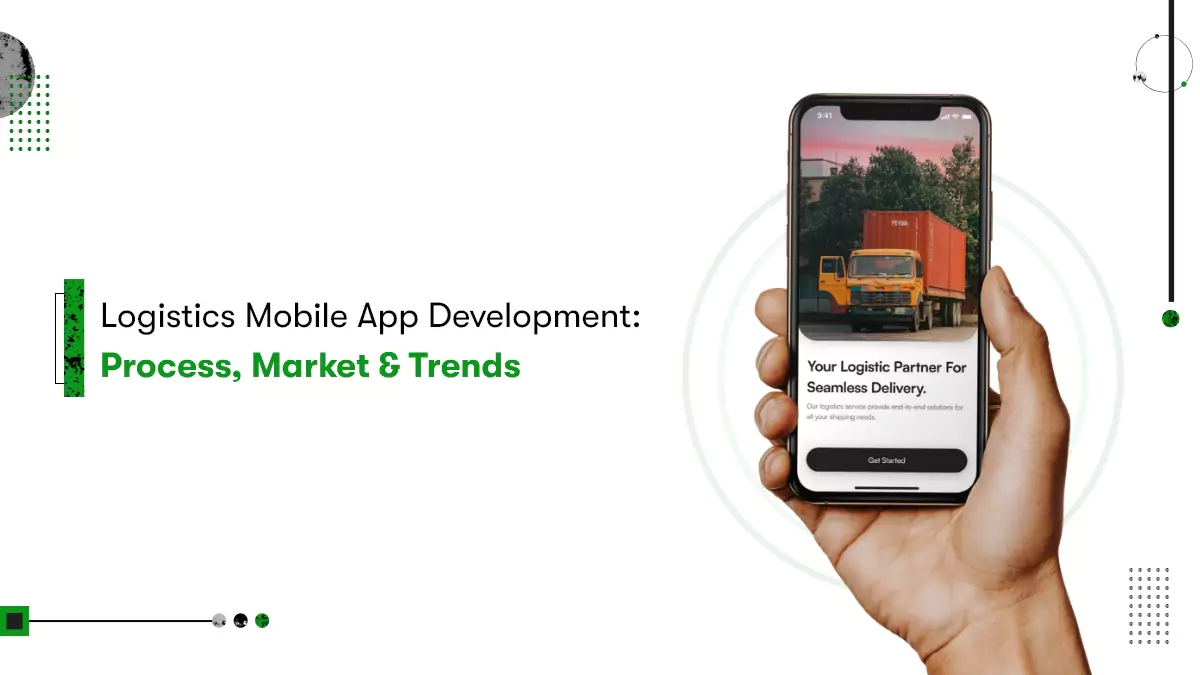

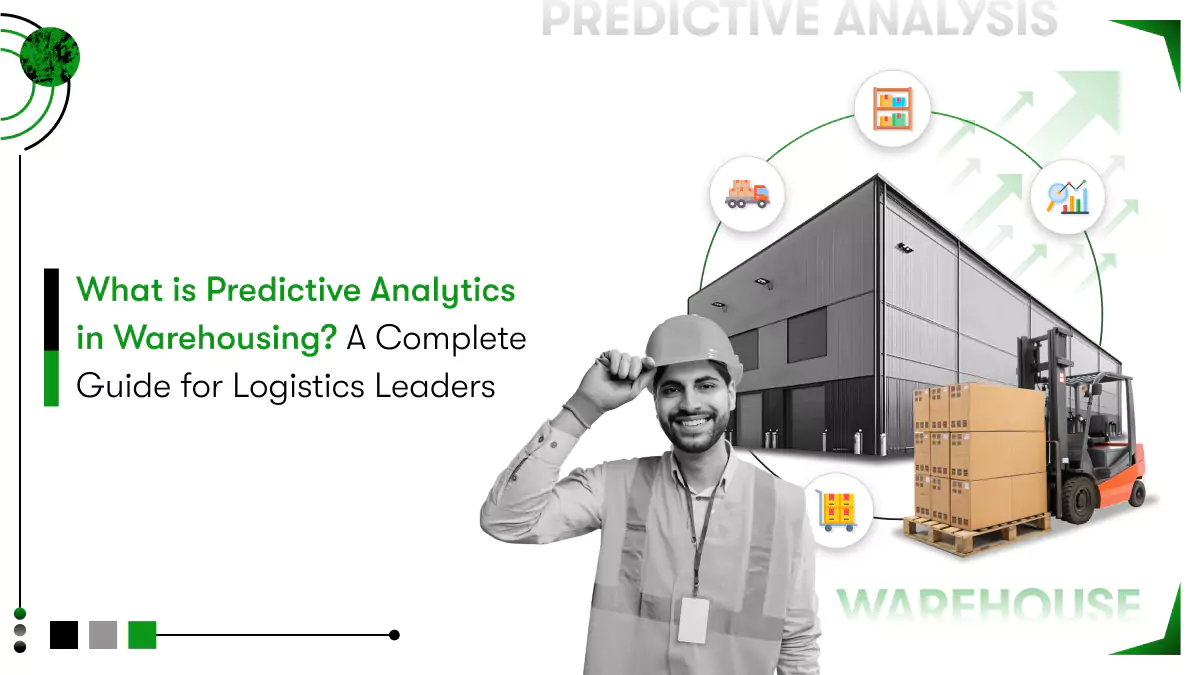
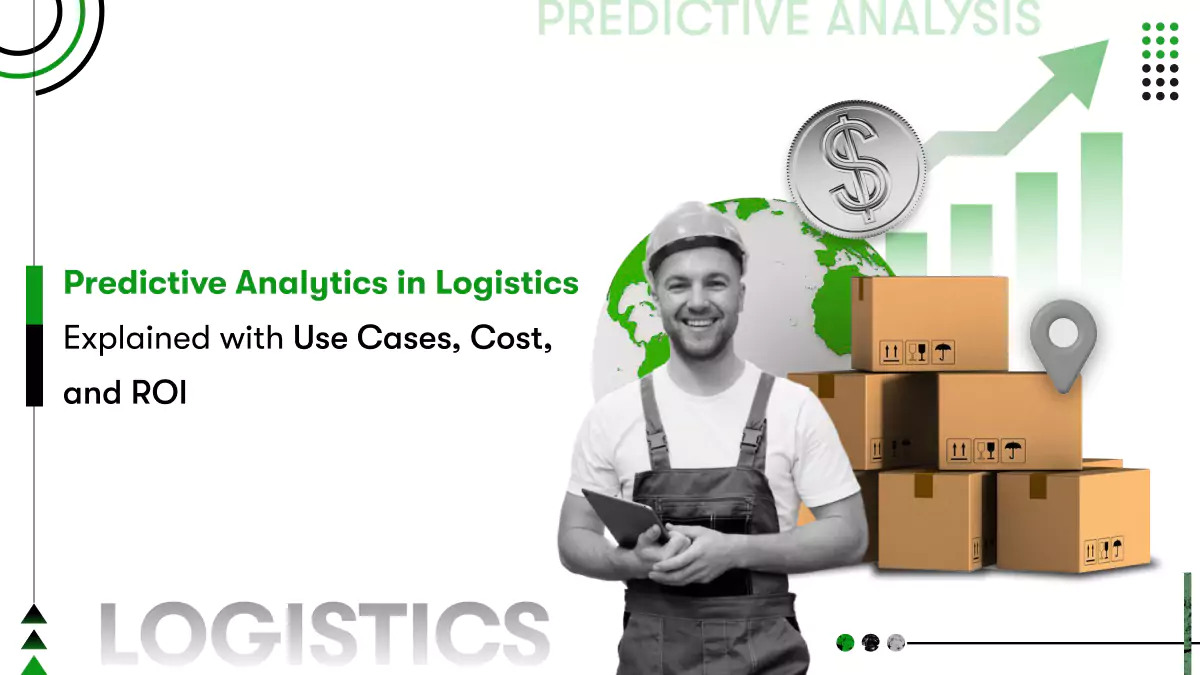
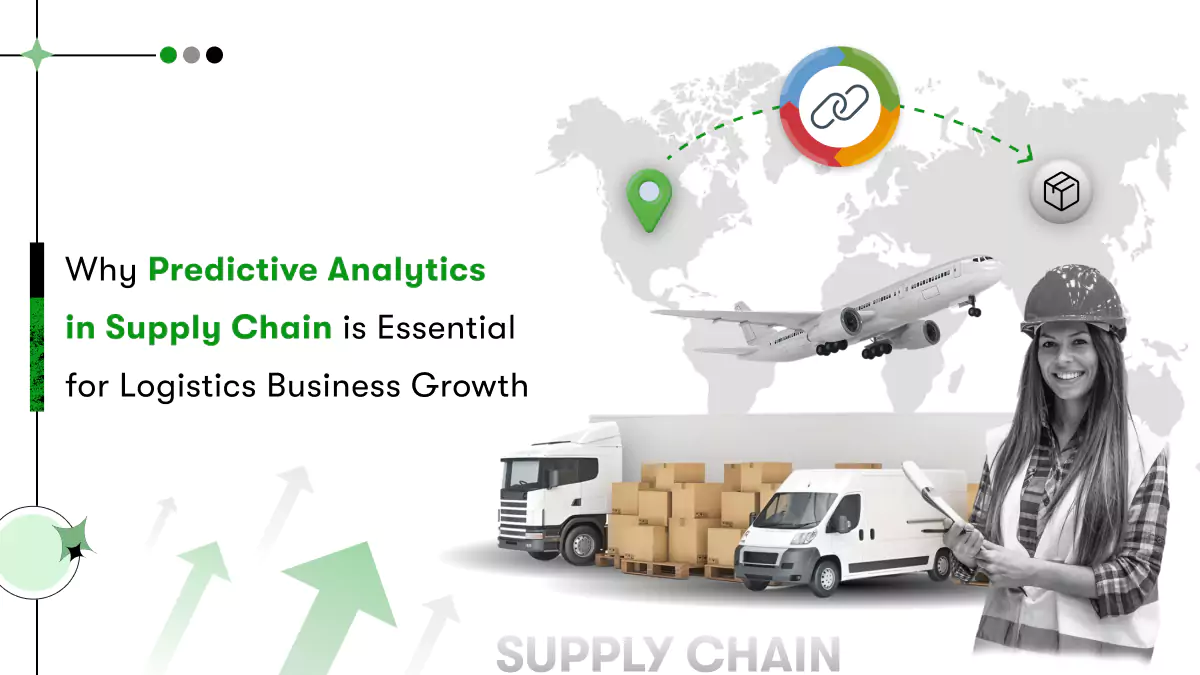


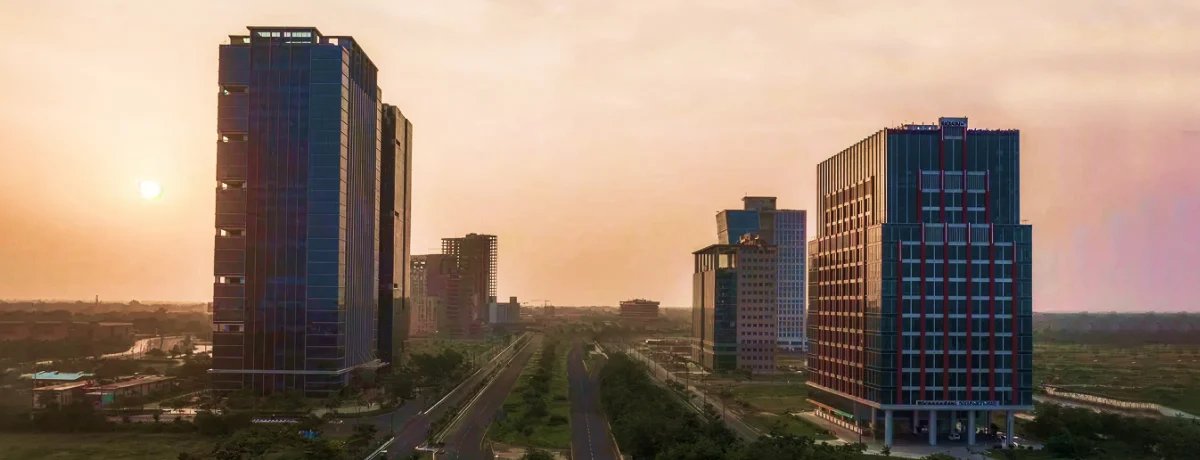




 Contact Information
Contact Information